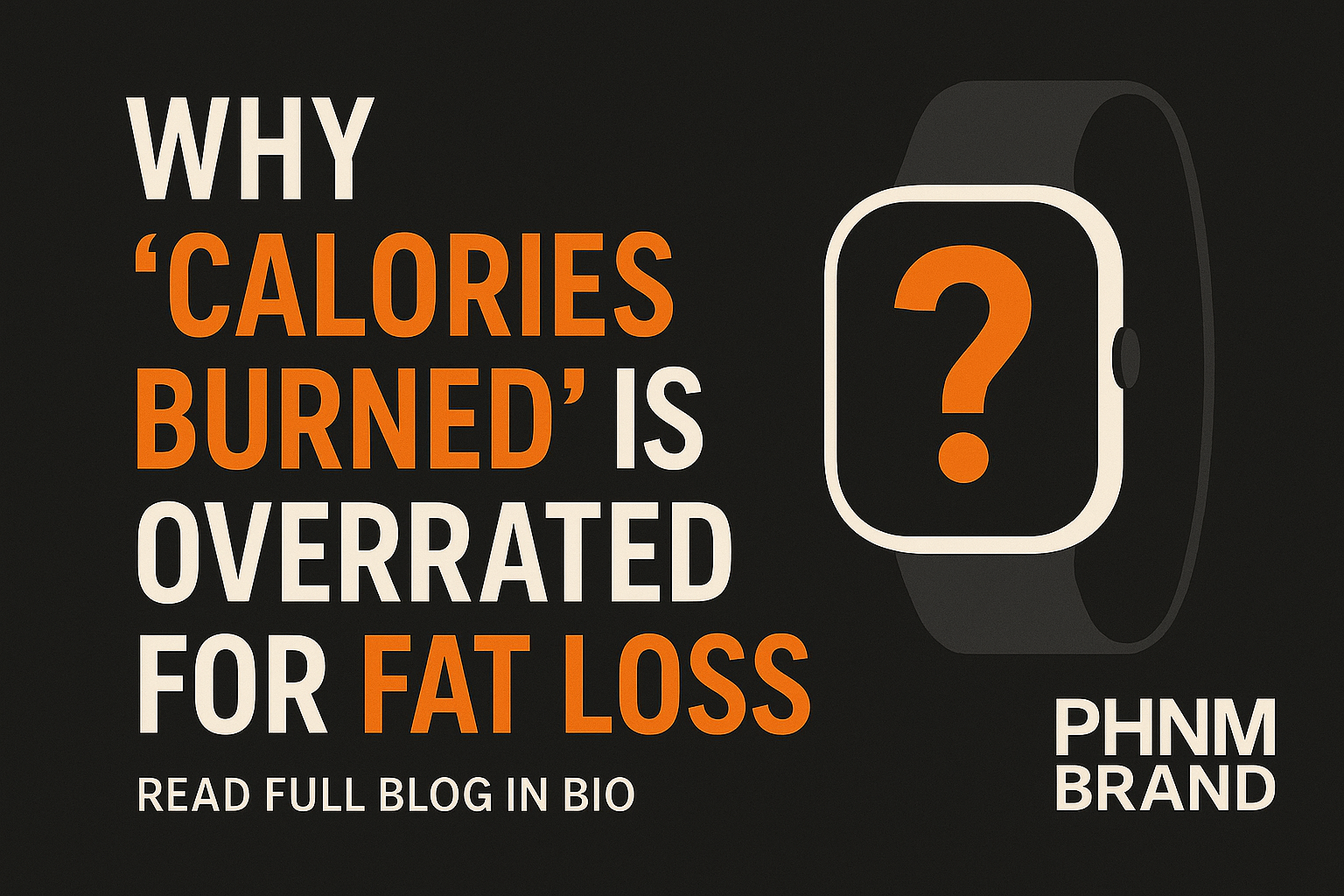Why “Calories Burned” In a Workout Isn’t the Best Metric for Fat Loss
You crushed a sweaty HIIT workout. Your fitness tracker says you torched 500 calories. That must mean you’re on your way to burning fat and getting leaner… right?
Not exactly.
If you’re focused solely on the number of calories burned during a workout, you’re missing the bigger picture of fat loss and body composition. In fact, this common approach can lead to frustration and missed results.
Let’s break down why the “calories burned” metric is overrated, and what you should actually track instead.
1. The Problem with Tracking Calories Burned
Most people rely on watches, apps, or cardio machines to tell them how many calories they’re burning. The number feels concrete, almost like a receipt for your workout.
But here’s the truth:
-
These numbers are often inaccurate. Wearables and machines estimate calorie burn using generalized data, and they can be off by 20–40% or more depending on your age, weight, heart rate, and fitness level.
-
They don’t account for your body’s adaptive response. As you get fitter, you burn fewer calories doing the same workout. Your body becomes more efficient, which is great for endurance, but not necessarily fat loss.
-
They ignore the most important piece: long-term adaptation. A workout’s true value isn’t just in what it burns during , but in what it builds after.
2. Cardio Is Great for Your Heart. But Overrated for Fat Loss
Cardio workouts like running, biking, or HIIT have tons of benefits:
-
Improve heart health
-
Boost endurance
-
Burn calories quickly
-
Reduce stress
But when it comes to long-term fat loss and body composition, cardio has limits.
That’s because:
-
It does little to preserve muscle. In a calorie deficit, cardio can lead to muscle loss if not paired with resistance training.
-
It doesn’t significantly elevate your metabolism after the session.
-
Fat loss stops when you stop the session. The “afterburn effect” (EPOC) is minimal compared to strength training.
Cardio should still be in your toolbox, but it shouldn’t be the main tool if body composition change is the goal.
3. Strength Training Changes Everything
Here’s what strength training brings to the table:
✅ Muscle retention and growth. Muscle is metabolically active, the more you have, the more calories you burn at rest.
✅ Elevated EPOC (post-workout burn). After a heavy lifting session, your body continues to burn calories for hours (sometimes up to 24–48).
✅ Body recomposition. You can lose fat and build muscle at the same time, something cardio alone won’t help with.
✅ Improved insulin sensitivity, bone density, and hormone health.
Bottom line? Strength training helps reshape your body and improves your metabolism over the long haul — even if your watch says you only “burned 200 calories.”
4. What You Should Track Instead
If calorie burn isn’t the gold standard, what should you focus on?
Here’s what actually reflects progress:
-
Strength gains (reps, sets, weight lifted)
-
Body measurements (waist, hips, arms, etc.)
-
Photos/clothing fit
-
Energy levels and sleep quality
-
Consistency — not perfection
And if you’re using a fitness tracker, try tracking heart rate zones, step count, or active minutes instead of obsessing over calories.
5. Cardio vs. Strength: A Better Way to Think About It
Instead of thinking “Which burns more calories?”, ask:
-
What helps me build and maintain muscle?
-
What supports my metabolism long-term?
-
What makes me feel strong and energized, not depleted?
In that light, cardio becomes a supporting role , not the main character, in your fat loss journey.
Cardio can aid recovery, improve heart health, and support mental health. But it’s strength training that drives sustainable changes in body composition.
6. Final Thoughts: Burn Less, Build More
The next time you finish a workout and your watch doesn’t show a big calorie number, remember:
That number doesn’t define your progress.
Calories burned are just one tiny part of the equation, and often the least important.
If you want a stronger, leaner body, shift your focus from burning to building.
🔹Bonus Tip:
In my book “The Fitness Blueprint: Build Sustainable Results in a Shortcut World,” I go deeper into this topic and help you build a fitness plan that prioritizes long-term results over short-term gratification.

